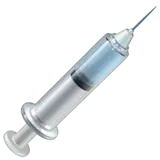Iron deficiency
Fe deficiency


CLASSIFICATION
Abiotic, nutrient-related issue, nutrient deficiency
ABOUT
Iron is required for enzyme and chlorophyll production and is essential for plant development and metabolism. Deficiency causes typical color patterns in leaves - leaves turn yellow, but the veins of the leaves stay green. Chlorosis usually occurs in newly emerging leaves. Other symptoms include poor growth, leaf loss, and poor fruit quality and quantity.
How to treat?
 Biological
BiologicalReplant the plant into fresh soil rich in nutrients.
Add manure or compost to the soil.
 Chemical
ChemicalApply missing nutrients to the plant foliage (suitable for quick help). Follow the instructions on the chosen product to prevent excessive fertilizer usage. Apply iron fertilizer as a foliar spray (e.g. ferrous sulfate).
Apply missing nutrients to the soil (suitable for long-term help). Follow the instructions on the chosen product to prevent excessive fertilizer usage. Apply chelated iron fertilizers to the soil.
 Disease prevention
Disease preventionApply fertilizer regularly. Fertilizing is especially important during spring and summer.
Keep the soil pH below 7 (if suitable for the plant). The pH can be lowered by adding powdered or prilled (pellet-form) sulfur. With higher pH, iron solubility is reduced.
Change the soil regularly. Plants should be repotted when the soil is compacted, depleted of nutrients, and no longer retains water.
Choose suitable neighboring plants. Plants with similar nutrient requirements should not be planted close to each other.